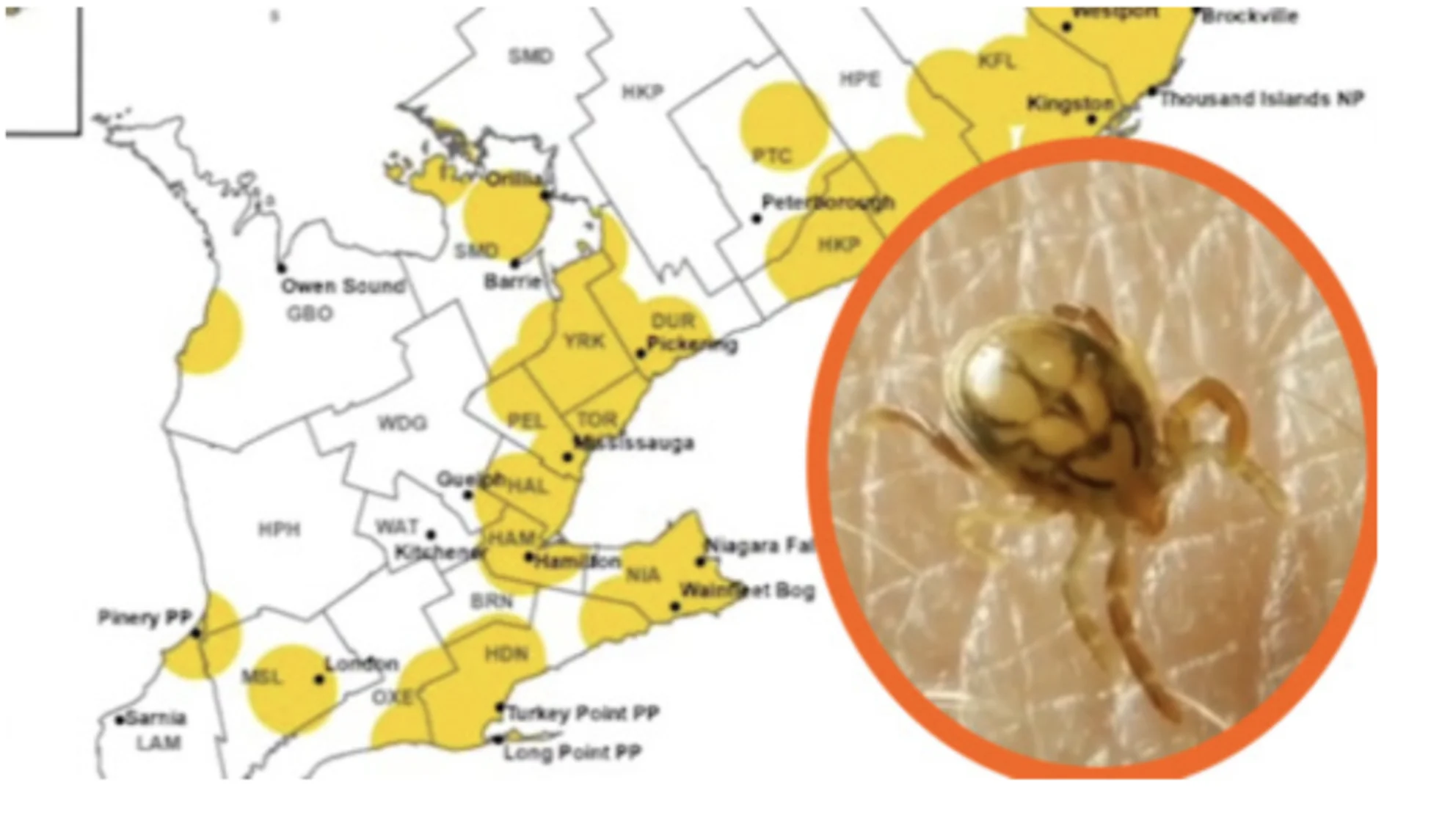
Ticks and Lyme disease are a growing concern in Ontario
In 2020, the Government of Canada recorded just over 1,600 cases of Lyme disease. In early 2021, that number nearly doubled to almost 3,000 cases.
The reason? Ticks.
According to Kimberly Gray, Zoonotic Diseases Program Coordinator for York Region Public Health, tick habitats are expanding across Canada, and the Greater Toronto Area is increasingly becoming a hotspot.
“Ticks are actually small creatures," she explained. "Black-legged ticks in particular are the ones that spread Lyme disease. Lyme disease is actually a bacteria.”
Tick season typically starts from the beginning of March when temperatures start to rise and ends generally around November as the weather begins to cool.
“These ticks are reproducing in our wooded areas, and you will find them in most of the Greater Toronto Area, [and] through much of Ontario,” said Gray.
Gray added that Black-legged ticks are expanding particularly quickler in areas along the northern shores of Lake Erie, Lake Ontario, and the southern shores of Lake Huron, while also moving their way quickly up the St. Lawrence Seaway.
DON'T MISS: Debunking 4 common myths about ticks
GAINING A BETTER UNDERSTANDING OF LYME DISEASE
Improved diagnosis and prevention of Lyme disease are at the heart of a new study conducted by researchers at the University of Guelph.
In a first-ever study, experts are linking internet search activity with local infection rates that can help provide public health units a tool to monitor that spread and warn people about Lyme hotspots.
"Our study was looking at search activity in Google Trends through the general public," explained Dr. Olaf Berke, a statistical epidemiology professor in the Department of Population Medicine in the Ontario Veterinary College. "[We were] looking for the keyword 'Lyme disease', and the idea is that when people look more frequently for this disease, we might pick up signals through those Google searches, and chances are people are going to be looking for this because they have been exposed and they want to learn more.”
“We don't know exactly where this Lyme disease is, but maybe this search engine can give us a clue,” added Berke.
SEE ALSO: Meet the lone star & Asian longhorned ticks: 2 species inching towards E. Canada
The team looked at reports of Lyme disease from 28 public health units in southern Ontario between 2015 and 2019. The researchers then compared that information with Google Trends data for the same regions and years.
They found that most infections occurred in eastern Ontario, between Prince Edward County and the Ontario-Quebec border. The same area showed more frequent internet searches for terms such as “Lyme disease,” “ticks” and “tick bites” than other parts of the province.
“There are plenty of people, thousands across Canada, who get infected and they need treatment… some people get away with a rash, some have more serious health effects. It could even be even lethal... so it’s not something we should brush off,” said Berke.
To learn more about the researchers' analysis of Lyme disease in southern Ontario utilizing Google Trends searches, click here.
WATCH BELOW: TIPS ON HOW TO PROTECT YOURSELF FROM TICK BITES
LESSON YOUR RISK
As ticks become more prevalent across the province, it's important to know how to stay as protected as possible when heading outdoors.
Gray advises folks to take precautions, "such as wearing insect repellent and covering up any exposed skin when you go outside.”
“This would include wearing long-sleeve shirts and pants. Also when you are walking through the forest it’s important to stay in the middle of the trails — ticks like to hang along the tall grass and the sides of trails, or the inside of the forest themselves.”
WHAT TO DO IF YOU FIND A TICK ON YOU
It's important to thoroughly check yourself, your children, and your pets after a hike or walk in wooded or grassy areas. Make sure you do a full-body check — especially in the hair, under the arms, in and around the ears, the belly button, behind the knees and between the legs.
If you spot a tick latching on, Gray explained how tweezers could be used to remove it.
“What you’re going to also do is take a set of tweezers, and if you have a tick on your skin, grab the tick as close as possible to the skin and pull it straight out. [It's] important not to put anything on the tick... no vaseline, don’t try to burn it off...just remove it as quickly as possible with a set of tweezers or a tick key,” said Gray. “After you remove the tick, cleanse the bite site thoroughly with rubbing alcohol and or soap or water.”





